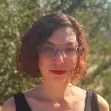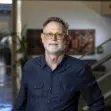Exclusives
BLOG POST
Bright Lights, Big City?
<p> I missed the APA national conference for the first time in 15 years -- but I quickly heard reports that one of the hot topics focused on banning electronic message boards. I dissent. </p> <p> What would Times Square be without the colorful, multi-message, oft-changing signs? Would Las Vegas have become the tourist definition that it has without the colorful signs? I am not a huge fan of Las Vegas, but I certainly think it has the right to define itself as it wishes. </p>
FEATURE
Should Fuel Taxes Pay For Alternative Transportation?
Planetizen has teamed up with <a href="http://www.nationaljournal.com/">National Journal</a>, a weekly politics and policy magazine, to explore transportation issues. As part of National Journal's <a href="http://transportation.nationaljournal.com/">Transportation Experts blog</a>, we've asked Planetizen Interchange bloggers and National Journal's Transportation Experts whether money from the Highway Trust Fund should be used for non-highway projects like bike lanes and pedestrian walkways.
FEATURE
Breaking Silos in the City
BLOG POST
Car Sharing Economies Of Scale
<p> Introducing car sharing (ZipCar, Hertz Connect, etc,) to a development can significantly reduce parking demand and, hence, construction costs. </p>
BLOG POST
Tips on Gainful Unemployment for New Planners
In the United States the stimulus package will eventually kick in to create jobs for planners—in housing, transportation, design and such. However, in upcoming months students graduating from planning schools face a situation they typically had not planned on—where unemployment is relatively high and employers are hesitant about taking on new people. As I have been pointing out to my students, this is not the first time in the history of the world that such a situation has occurred. The following tips draw on my own observations of successful strategies for weathering such downturns.
BLOG POST
Convergence of Mobility and Mobility (ConMaM)
<p> One of the many glorious perks of being an engineer is that we are so bad at thinking up clever names for programs and tools that there's been an unabashed, universal concession by the general public to accept our use of horribly convoluted acronyms. My favorite transportation acronym sub-genre is the collection of traffic signal configurations that for no clear reason (other than because engineers are, deep down, fun people) have flown off on a winged tangent. The original intersection signal control which included pedestrian push buttons was “PEdestrian LIght CONtrolled”, close enough to be named “Pelican”. A “Pedestrian User-Friendly INtelligent crossing” alternative to the Pelican is named “Puffin”. Since a combined pedestrian/bicycle signal means two (
FEATURE
From Motor City to Garden City
Detroit may be struggling economically, but community groups and citizen activists are keeping the city vibrant with a wide variety of urban farming projects throughout the shrinking city.
BLOG POST
The Next City
"Rules established in another era need to be rethought, " said Xavier de Sousa Briggs, associate director of the White House Office of Management and Budget this weekend in Cambridge. Briggs' job touches almost everything, from the postal service to the Department of Homeland Security, and it was admittedly exciting to see someone with an urban planning background in such a powerful position. Briggs spoke at lightning speed, and I could almost see the multitude of invisible connections going into his brain and back out to the White House. Much of what he's working on, he explained, is taking "old stovepipes" -- government agencies that have worked in silos for decades -- and making them talk to each other. <br />
BLOG POST
Post Industrial?
<p style="margin: 0in 0in 0pt; text-indent: 0in" class="MsoNormal"> <span style="font-size: small"><span style="font-family: Calibri">I never put much thought into the term “post-industrial.”<span> </span>In my college and grad years, the phrase seemed to be used like candy – a ubiquitous summary of the current state of cities in the US.<span> </span>The phrase implies a kind of death in our cities, an inability to retain the industries that spurred their very growth.<span> </span></span></span> </p>
BLOG POST
Tight Budgets and the Need to Plan
<p> Which of these families most needs to plan its family commitments and related budget items? </p> <p> Family 1: Wife is a bankruptcy lawyer whose business is booming; husband is an executive at a growing wind-energy company and has just received a nice raise, paid out of growing profits. The kids are grown. The couple's two Polish Lowland Sheepdogs are very healthy. </p> <p> Family 2: Wife is a plant manager for a U.S.-owned automobile company, facing mandatory unpaid time off this year; husband is a travel agent who sells high-end vacation packages to school teachers, planners and other middle-income individuals and families. Son has graduated from college but cannot find a job and is living at home and working part-time at a burger place. Daughter will be a college junior next year at an institution that has had its funding cut by the state and has thus announced a 15 percent tuition increase. </p>
BLOG POST
Great street design, and coming full-circle with our design heroes
<span style="font-size: x-small">"If we can develop and design streets so that they are wonderful, fulfilling places to be </span><span style="font-size: x-small; font-family: Tahoma"><span style="font-size: x-small; font-family: Tahoma">—</span></span><span style="font-size: x-small"> community-building places, attractive for all people </span><span style="font-size: x-small; font-family: Tahoma"><span style="font-size: x-small; font-family: Tahoma">—</span></span><span style="font-size: x-small"> then we will have successfully designed about one-third of the city." A</span><span style="font-size: x-small">llan Jacobs </span><span style="font-size: x-small"> <p> A few weeks ago, I was asked to speak at an event celebrating what might possibly come to be recognized as one of Vancouver's important civic feats - the redesign and reconstruction of downtown Vancouver's Granville Street. </p>
BLOG POST
Streets Are For People, Not (Just) Cars
At a company presentation about environmental impact the other week a colleague included a historic photograph of Scollay Square in Boston. You are pardoned if, even after visiting or living in that city, this doesn’t sound familiar because all prominent characteristics of the area were summarily obliterated in the mid-twentieth century to make way for a potpourri of brutalist-style administrative buildings and renamed Government Center. Urban redevelopment arguments aside, the photograph reveals a particularly interesting detail about the function and use of streets virtually erased from our minds over the last century. <p> <img src="/files/u20603/Scollay.jpg" width="432" height="336" align="bottom" name="graphics1" /> </p>
BLOG POST
Senate Draws An Awkward MAP
<span style="border-collapse: separate; font-size: 16px; font-style: normal; font-variant: normal; font-weight: normal; letter-spacing: normal; line-height: normal; orphans: 2; text-indent: 0px; text-transform: none; white-space: normal; widows: 2; word-spacing: 0px; font-family: 'Times New Roman'; color: #000000" class="Apple-style-span"><div style="font-family: Verdana, Arial, Helvetica, sans-serif; font-size: 10px; background-color: #ffffff"><p class="MsoNormal">Remember the legislation that, in 1965, affirmed universal suffrage in all elections?<span> <span class="Apple-converted-space"> </span></span>Yes, you do.<span> <span class="Apple-converted-space"> </span></span>It was called the National Voting Rights Act.</p>
BLOG POST
The APA needs a Sustainability Division
<p> Many planners and even American Planning Association (APA) members are unaware that the APA has special member bodies called <a href="http://planning.org/divisions/index.htm">Divisions</a>. These are essentially issue-focused member committees within APA that contribute to policymaking, develop conference sessions, publish newsletters, and generally act as focal points for like-minded APA members. </p>
FEATURE
The Disproportionate Costs of Resort Developments
A new report out of Oregon suggests that the fiscal costs of successful resort developments significantly outweigh their benefits -- and taxpayers are burdened with the tab. Erik Kancler of Central Oregon LandWatch explains.
BLOG POST
Who Really Needs A World Cup
<p> Whether you've realized it yet or not, soccer is a big deal in this gloabalizing world. And every four years it's a huge deal for one country: the host of the FIFA World Cup. All eyes are on the host country for the 32-team tournament, which is the most-watched sporting event in the world. And though showtime is just one month long, the host spends years vying, preparing and investing for the tournament. It has major potential to spur broad countrywide improvements and economic development. So when the U.S. made news recently by <a href="http://www.google.com/hostednews/ap/article/ALeqM5hAf04GntIiIkl5LwxXs5V8nyvDMAD97F6TRG0" target="_blank" title=""US Soccer: Plenty of time for new stadiums" - Associated Press, April 9, 2009">offering forth 70 stadia as possible host sites for either the 2018 or 2022 World Cup</a> (along with <a href="http://www.goal.com/en-india/news/140/world-cup/2009/4/15/1211332/president-obama-trying-to-help-us-world-cup-bid" target="_blank" title="President Obama Trying To Help US World Cup Bid - Goal.com">a reputation booster from President Barack Obama</a>), I had to filter out my national pride. Sure, the U.S. would make a good and clearly able host for the event, but it seems that the potential of the World Cup could be better directed towards a country that really needs large-scale civic improvement and investment.
BLOG POST
Drawing Blanks: Urban Design and the Power of the Pen
<p> With just two weeks to go in my second semester, I like to think that I know just about everything about being a planning student by now. But when 100+ prospective students came to our campus open house last week, an easy question stumped me: </p> <p> “What about drawing?” </p> <p> At first I thought she was asking if she needed to have an art background coming into school. A thousand times, no. But instead she was looking to <em>learn</em> how to draw as a planner, which is a much trickier proposition. </p>
BLOG POST
Just-In-Time For Hybrid-Electric Shipping?
<p> <span style="font-size: 8pt; font-family: Verdana">An article posted <a href="http://www.guardian.co.uk/environment/2009/apr/09/shipping-pollution"><span style="color: #800080">last week</span></a> by the Guardian and highlighted <a href="http://www.treehugger.com/files/2009/04/cargo-ship-emissions-more-than-760-million-cars.php"><span style="color: #800080">yesterday</span></a> by Treehugger.com cites recent studies as well as data from maritime industry sources that the combination of quantity and quality of low-grade bunker fuel used in the massive engines of freight vessels may result in more emissions than all the cars in the world! I don’t mean to wax sensationalist here, this is what is stated in the article. If the truth is anywhere near the statement, then the idea of
BLOG POST
Compact in Nature: An Urbanist in Japan
<p> It’s always tempting returning from a vacation to a foreign country to come to conclusions about how that society works. This isn’t entirely a bad thing- after all, exposure to different ways of life are mind-expanding and suggest new possibilities. My first trip to Rome redefined the way I think of public space, and set me on a path leading to a career in urban planning. </p> <p> <img src="/files/20090415_philosophers2.jpg" alt="Along the Philosopher's Walk in Kyoto." title="Along the Philosopher's Walk in Kyoto." width="438" height="329" /> </p> <p> <em>Along the Philosopher's Walk in Kyoto.</em> </p>
Pagination
Heyer Gruel & Associates PA
JM Goldson LLC
Custer County Colorado
City of Camden Redevelopment Agency
City of Astoria
Transportation Research & Education Center (TREC) at Portland State University
Camden Redevelopment Agency
City of Claremont
Municipality of Princeton (NJ)
Urban Design for Planners 1: Software Tools
This six-course series explores essential urban design concepts using open source software and equips planners with the tools they need to participate fully in the urban design process.
Planning for Universal Design
Learn the tools for implementing Universal Design in planning regulations.


































